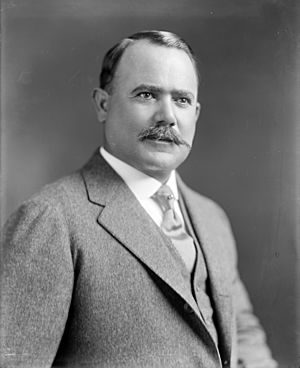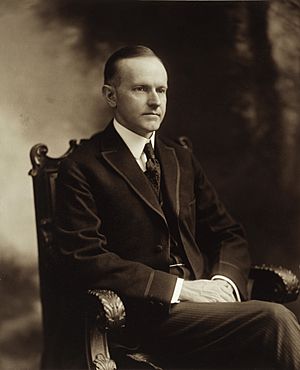American-Mexican Claims Commission facts for kids
The American-Mexican Claims Commission was a special group set up by the United States and Mexico. Its job was to help citizens from one country get paid back for things they lost because of actions by the other government. This group, also called the General Claims Commission, worked from 1924 to 1934. There was also a Special Commission to handle problems from the Mexican Revolution. Neither group fully solved all the issues. So, in 1934, the two governments talked directly and found a way to settle the claims.
Contents
History of Claims
Since Mexico became independent in 1821, the U.S. and Mexico often had disagreements. These included arguments over land, taxes, and money owed to U.S. citizens. From 1825 to 1839, a special meeting helped settle some of these claims. More groups were formed after big events like the Texas Revolt and the Mexican–American War (1848). Another group was set up in 1868 after the French left Mexico.


The main American-Mexican Claims Commission started because of an agreement signed on September 8, 1923. This happened in Washington D.C. when Álvaro Obregón was Mexico's President and Calvin Coolidge was the U.S. President. President Obregón wanted the U.S. to officially recognize his government. They also talked about oil laws, which led to the Bucareli Treaty.
The Claims Commission was another way to improve relations between the two countries. It officially began on March 1, 1924. Its goal was to settle claims for losses or damages that happened after July 4, 1868. This included losses to people or their property. It also covered harm caused by government officials or others acting for either government. However, cases from the Mexican Revolution were not part of this General Commission.
How the Commissions Worked
The General Commission met from 1924 to 1931. They held meetings in Washington, D.C., and Mexico City. Their work started again in 1934 with a new plan and new members. These new members were Genaro Fernández MacGregor from Mexico and Oscar Underwood, Jr., from the U.S.
A different group, the Special Claims Commission, was created to handle problems from the Mexican Revolution. These events happened between November 20, 1910, and May 31, 1920. For example, U.S. citizens claimed losses from this time. But the Mexican government argued that some losses were caused by "bandits" like Pancho Villa, not "true revolutionaries." Villa's forces had killed some U.S. engineers. The families of these engineers asked for over $1 million. However, the Mexican members of the commission said no. They argued that Villa was a private bandit, and the Mexican government was not responsible for his actions.
Why They Didn't Fully Succeed
Neither the General Claims Commission nor the Special Claims Commission fully succeeded. One reason was that both sides had very different ideas about how much damage was done. They also disagreed on who was to blame. Also, political disagreements made it hard. Each claim became a matter of national pride for both countries. Citizens from both the U.S. and Mexico asked for a lot of money for their losses. They hoped that even if they only got a small percentage, it would still be a good amount.
How Claims Were Finally Settled
In 1934, the U.S. and Mexican governments decided to talk directly. They worked to settle all the general and special claims through normal diplomatic discussions. They agreed on a formula for payment, which was 2.64% of the original claimed value. Instead of looking at each claim separately, they grouped them all together. The money was paid in parts from one government to the other. Then, each government would give the money to its citizens who had made claims. This quiet way of talking, rather than the big commission meetings, finally helped clear up all the claims.
See also
 In Spanish: Tratado de Bucareli para niños
In Spanish: Tratado de Bucareli para niños

